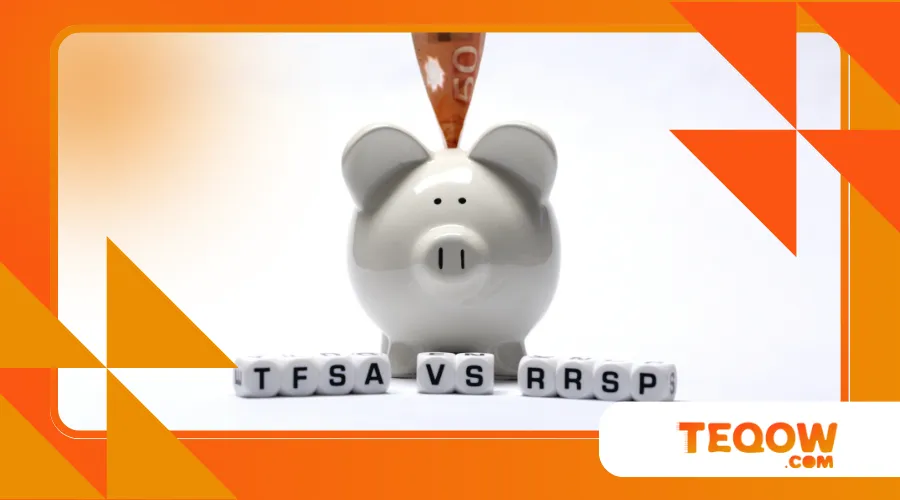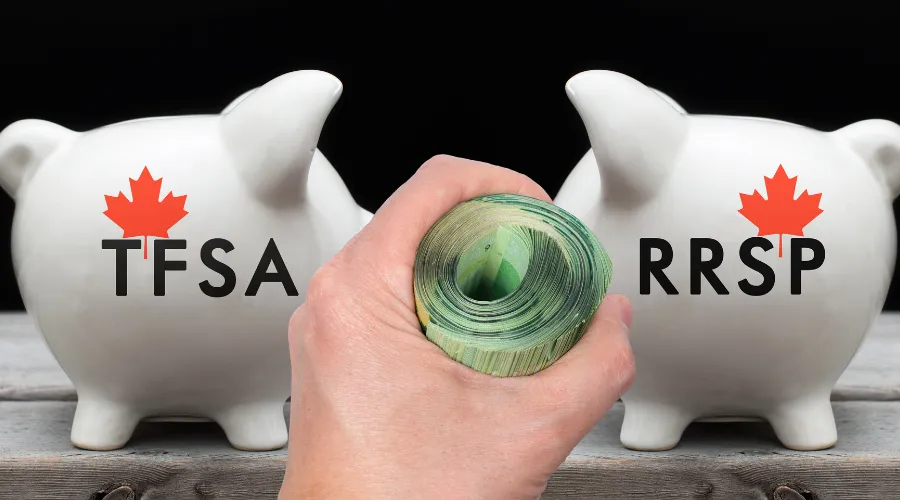Maximizing Your RRSP and TFSA Benefits: What Every Canadian Needs to Know

For Canadians aiming to secure their financial future, maximizing your RRSP and TFSA benefits is a cornerstone of smart wealth-building.
These two powerful tools—Registered Retirement Savings Plans (RRSPs) and Tax-Free Savings Accounts (TFSAs)—are uniquely designed to help you grow wealth efficiently, but only if you wield them strategically.
Missteps or underuse can mean leaving thousands of dollars on the table, while a thoughtful approach can transform your savings into a robust nest egg.
This guide dives into fresh, actionable strategies to optimize these accounts, blending creativity with practical insights to ensure you’re not just saving but thriving.
Why settle for mediocre returns when you can unlock the full potential of these tax-advantaged accounts?
In addition, understanding these accounts can empower Canadians to make informed decisions about their financial futures, leading to greater overall wealth and stability.
Understanding the RRSP and TFSA: A Tale of Two Tax Titans
Let’s start by demystifying these financial vehicles.
RRSPs and TFSAs are like two sides of a coin, each offering distinct advantages.
An RRSP is a tax-deferred account, meaning contributions reduce your taxable income now, and withdrawals are taxed later, ideally in retirement when your income (and tax bracket) may be lower.
A TFSA, by contrast, is funded with after-tax dollars, but all growth and withdrawals are tax-free.
Think of them as complementary tools in your financial toolbox: RRSPs for long-term retirement planning, TFSAs for flexibility across life’s stages.
The key to maximizing your RRSP and TFSA benefits lies in understanding their rules and leveraging them to align with your goals.
For 2025, the RRSP contribution limit is 18% of your earned income from the previous year, up to a maximum of $33,640, while the TFSA limit is $7,000 annually, with unused room carried forward.
According to a 2024 BMO survey, only 40% of Canadians fully utilize their TFSA contribution room, leaving billions in tax-free growth untapped.
This statistic underscores a critical truth: underutilization is the silent wealth-killer.
Moreover, recognizing the differences between these accounts can help individuals tailor their financial strategies to maximize benefits, ensuring they make the most of their contributions.
Strategic Contribution Timing: When to Invest Matters
Timing your contributions can significantly boost returns.
For RRSPs, contributing early in the year—or even monthly—harnesses the power of compounding.
Consider Sarah, a 35-year-old software developer earning $90,000 annually.
By contributing $16,200 to her RRSP in January 2025, she not only reduces her taxable income but also allows her investments to grow tax-deferred for the entire year.
Waiting until the last day of the contribution period (March 1, 2026, for 2025 tax purposes) could cost her months of growth.
TFSAs offer similar timing benefits but with more flexibility.
Since withdrawals are tax-free, TFSAs can act as an emergency fund or a vehicle for short-term goals, like saving for a home.
Contributing early maximizes tax-free compounding.
For example, depositing $7,000 in January versus December could yield an extra $350 in growth over a year, assuming a 5% annual return.
Here’s a quick breakdown:
Table 1: Impact of Early vs. Late TFSA Contributions (5% Annual Return, Compounded Monthly)
| Contribution Timing | Amount Invested | Value After 1 Year | Additional Growth |
|---|---|---|---|
| January 1, 2025 | $7,000 | $7,350 | $350 |
| December 31, 2025 | $7,000 | $7,000 | $0 |
This table illustrates why timing is a subtle but powerful lever for maximizing your RRSP and TFSA benefits.
Don’t let procrastination erode your wealth.
Furthermore, being proactive with contributions can lead to significant long-term gains, making it essential for Canadians to adopt a disciplined approach to their savings.
+ Investing in ETFs in Canada: A Step-by-Step Guide for Beginners
Asset Allocation: Crafting a Balanced Portfolio
Where you invest within these accounts is as critical as how much you contribute.
RRSPs and TFSAs can hold a range of assets—stocks, bonds, ETFs, mutual funds, and even GICs—but the mix should reflect your risk tolerance and timeline.
A common mistake is treating both accounts identically.
Instead, consider their tax implications.
High-growth assets like equities are often better suited for TFSAs, where capital gains are tax-free.
For RRSPs, income-generating assets like bonds or dividend stocks can be ideal, as their distributions would otherwise be heavily taxed outside a registered account.
Take Michael, a 45-year-old teacher with a balanced portfolio.
He allocates 70% equities and 30% bonds in his TFSA to capitalize on tax-free growth, while his RRSP holds 50% bonds and 50% dividend-paying stocks to minimize future tax liability.
This strategic split enhances his overall returns.
Ask yourself: are you allocating assets to optimize tax efficiency, or are you just tossing money into generic funds?
Moreover, tailoring your asset allocation to fit the unique characteristics of each account can significantly enhance your overall investment performance.

Tax Optimization: Playing the Long Game
The tax advantages of RRSPs and TFSAs are their superpowers, but they require foresight.
RRSP contributions are most effective when your income is high, as the tax deduction provides immediate relief.
For instance, a $10,000 RRSP contribution in a 40% tax bracket saves you $4,000 in taxes today.
However, withdrawals in retirement are taxed, so plan for a lower income phase.
TFSAs shine for flexibility—whether you’re saving for a car, a home, or retirement, withdrawals don’t trigger taxes or affect government benefits like Old Age Security.
A lesser-known strategy for maximizing your RRSP and TFSA benefits is using TFSAs to manage RRSP over-contributions.
If you accidentally contribute too much to your RRSP (beyond the $2,000 over-contribution buffer), you face a 1% monthly penalty on the excess.
By withdrawing from your TFSA to correct the overage, you avoid penalties without disrupting your overall savings plan.
This interplay between accounts is like a financial dance—coordinated moves yield better results.
In addition, understanding the nuances of tax implications can empower Canadians to make smarter decisions that enhance their overall financial health.
Life Stage Strategies: Adapting to Your Needs
Your approach to RRSPs and TFSAs should evolve with your life.
In your 20s and 30s, TFSAs are often the priority due to lower incomes and shorter-term goals.
Use TFSAs for flexibility—saving for a wedding, travel, or a home down payment.
As income rises in your 40s and 50s, shift focus to RRSPs to reduce taxable income and build retirement wealth.
In retirement, TFSAs become invaluable for tax-free withdrawals, preserving RRSP funds to defer taxes further.
Consider this analogy: RRSPs and TFSAs are like a pair of skates and a stick in hockey.
In your youth, the skates (TFSAs) give you speed and agility to chase immediate goals.
Later, the stick (RRSPs) becomes your tool for precision, scoring long-term financial goals.
Balancing both ensures you’re not just playing the game but winning it.
Table 2: RRSP vs. TFSA by Life Stage
| Life Stage | Priority Account | Key Use Case | Example Goal |
|---|---|---|---|
| 20s–30s | TFSA | Short-term savings, emergency fund | Down payment, travel |
| 40s–50s | RRSP | Tax reduction, retirement savings | Maximize tax deductions |
| Retirement (60+) | TFSA | Tax-free withdrawals, income flexibility | Supplement pension, avoid OAS clawback |
This table highlights how maximizing your RRSP and TFSA benefits requires adapting to your financial season.
Additionally, recognizing the importance of adjusting your strategy as you age can lead to more effective wealth accumulation and a smoother transition into retirement.

Avoiding Common Pitfalls: Don’t Sabotage Your Savings
Even savvy savers can stumble.
One major pitfall is withdrawing from RRSPs prematurely, which triggers taxes and permanently reduces contribution room.
TFSAs, while more forgiving, can be misused as a revolving door for frequent withdrawals, undermining long-term growth.
Another error is neglecting to reinvest TFSA withdrawals.
If you withdraw $5,000 from your TFSA in 2025, you can recontribute that amount in 2026, but only if you track it.
Automation can prevent these missteps.
Set up automatic contributions to both accounts to ensure consistency.
For example, contributing $583 monthly to your TFSA hits the $7,000 annual limit, while $1,350 monthly to your RRSP maximizes a $16,200 contribution (for someone with sufficient room).
Automation removes emotion from the equation, ensuring you stay on track.
Furthermore, staying vigilant about your contributions and withdrawals can help you avoid costly mistakes that could hinder your financial growth.
++ RRSP vs. TFSA: Which Is the Best Choice for Your Money in 2025?
Advanced Tactics: Leveraging Loans and Spousal Plans
For high earners, an RRSP loan can amplify tax savings.
Borrowing to make a lump-sum RRSP contribution before the deadline can reduce your tax bill significantly, provided you repay the loan quickly to minimize interest costs.
Spousal RRSPs are another gem, allowing the higher-earning spouse to contribute to the lower-earner’s RRSP, splitting income in retirement to lower the overall tax burden.
For TFSAs, consider gifting funds to a spouse or adult child to use their contribution room, indirectly boosting family wealth without tax implications.
These tactics aren’t for everyone, but they illustrate the creative ways to stretch your dollar.
Maximizing your RRSP and TFSA benefits often means thinking beyond the basics and exploring tailored strategies.
Moreover, utilizing advanced strategies like spousal plans can enhance your family’s financial situation while optimizing tax efficiency.
The Power of Compounding: Your Silent Partner
Compounding is the engine behind both accounts.
A $7,000 TFSA contribution at age 25, growing at 6% annually, could reach $42,000 by age 65—tax-free.
The same amount in an RRSP, with a tax refund reinvested, could grow even more, assuming strategic withdrawals.
The earlier you start, the more compounding works its magic.
Yet, many Canadians delay, citing “market volatility” or “waiting for the right time.”
The truth? Time in the market trumps timing the market.
Additionally, recognizing the importance of starting early can dramatically impact your financial future, allowing your investments to grow exponentially over time.
For more comprehensive resources on Canadian financial planning, visit Canada.ca.
Conclusion: Your Path to Financial Freedom
Maximizing your RRSP and TFSA benefits isn’t just about saving—it’s about building a financial future with intention.
By timing contributions wisely, optimizing asset allocation, leveraging tax advantages, and adapting to life’s stages, you can turn these accounts into wealth-building powerhouses.
Avoid pitfalls, explore advanced tactics, and let compounding do the heavy lifting.
The question isn’t whether you can afford to contribute—it’s whether you can afford not to.
Start today, and let your RRSP and TFSA pave the way to financial freedom.
In summary, being proactive and informed about your RRSP and TFSA can lead to a secure financial future, ultimately empowering you to achieve your long-term goals.
